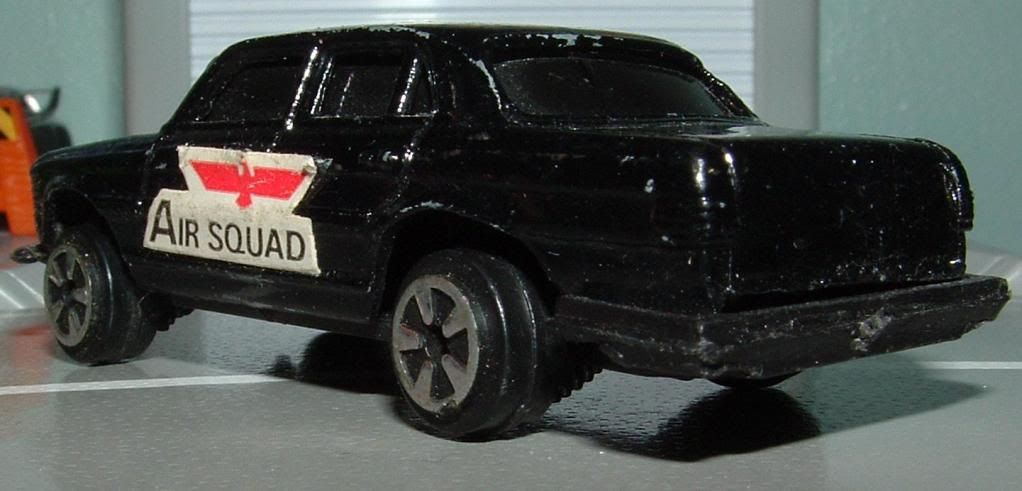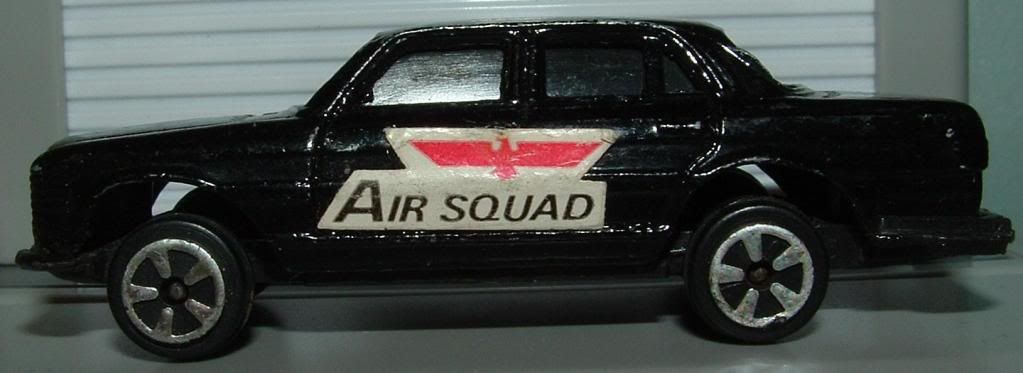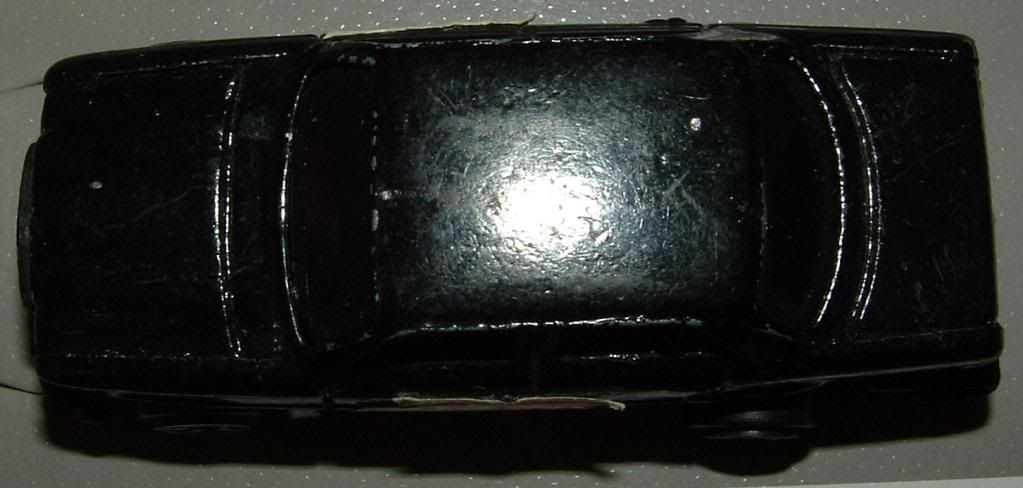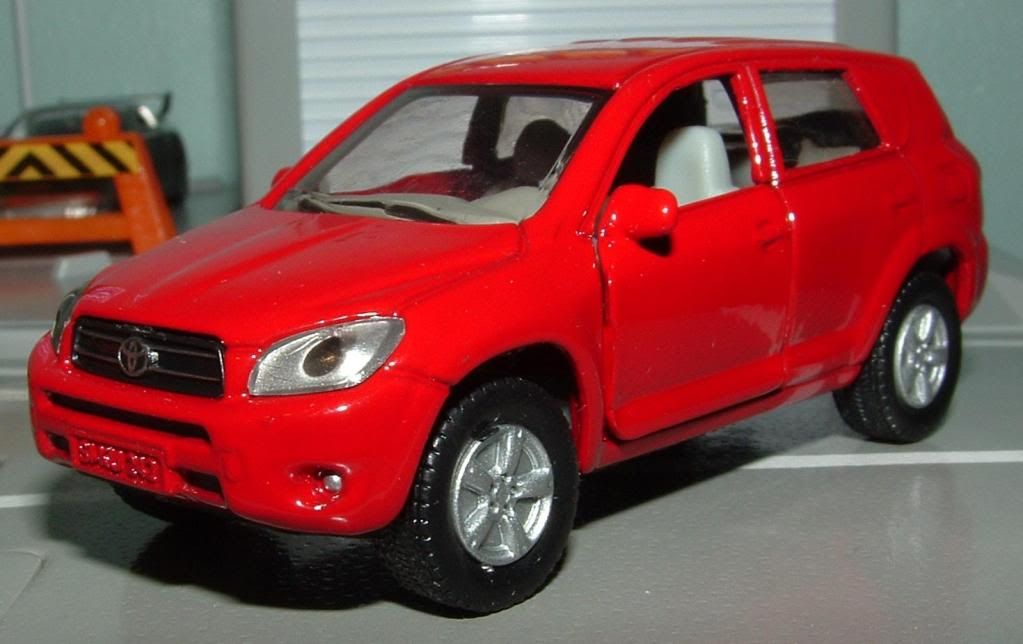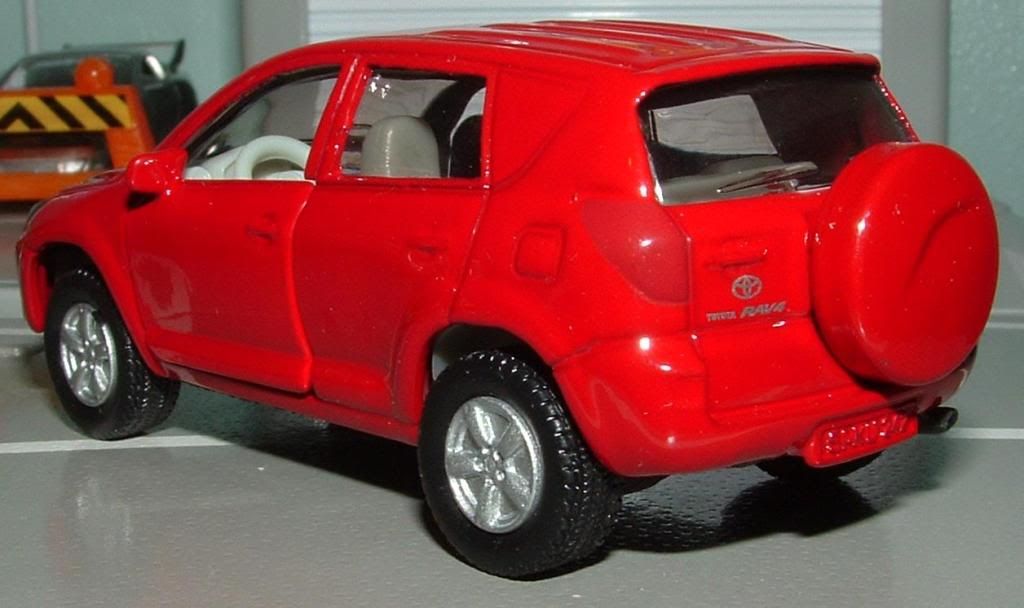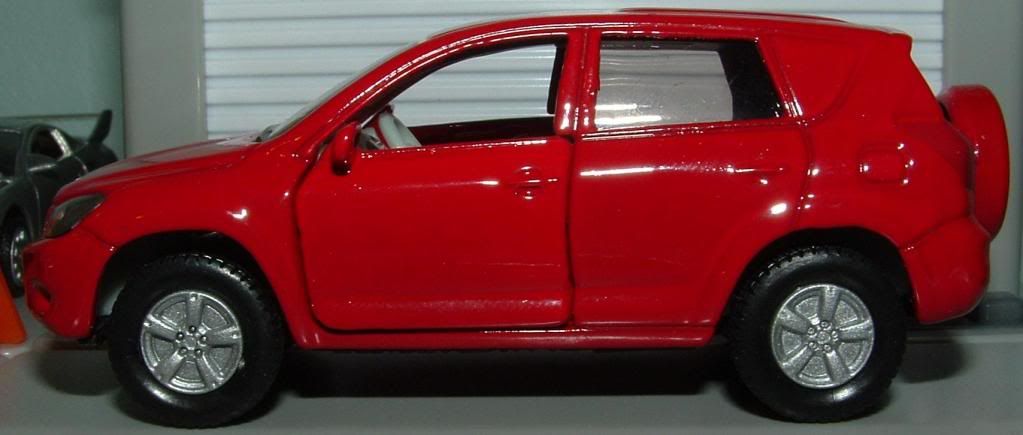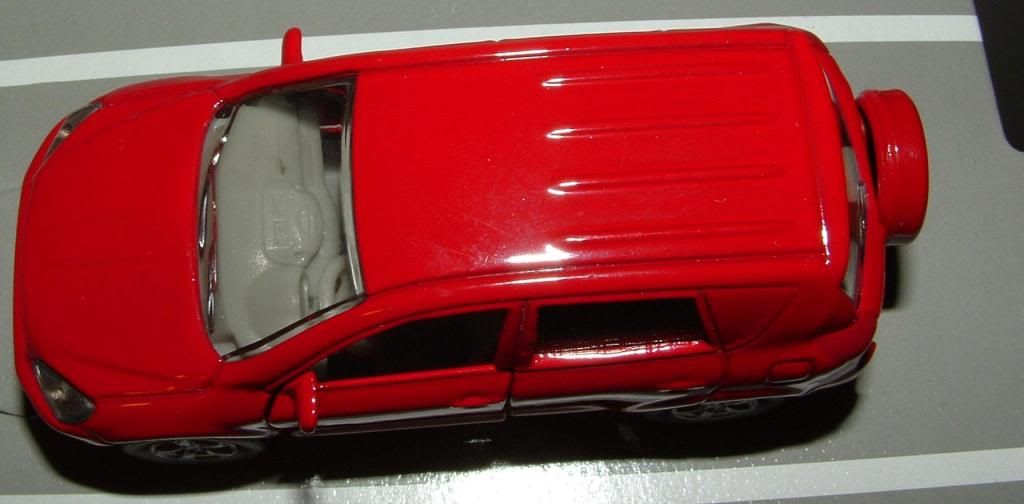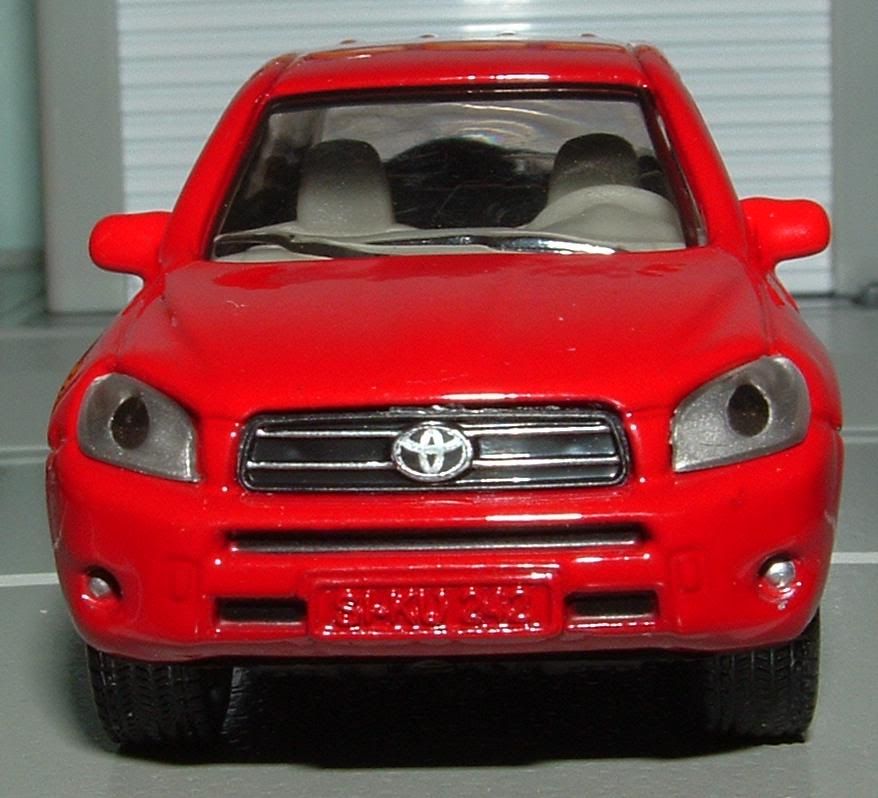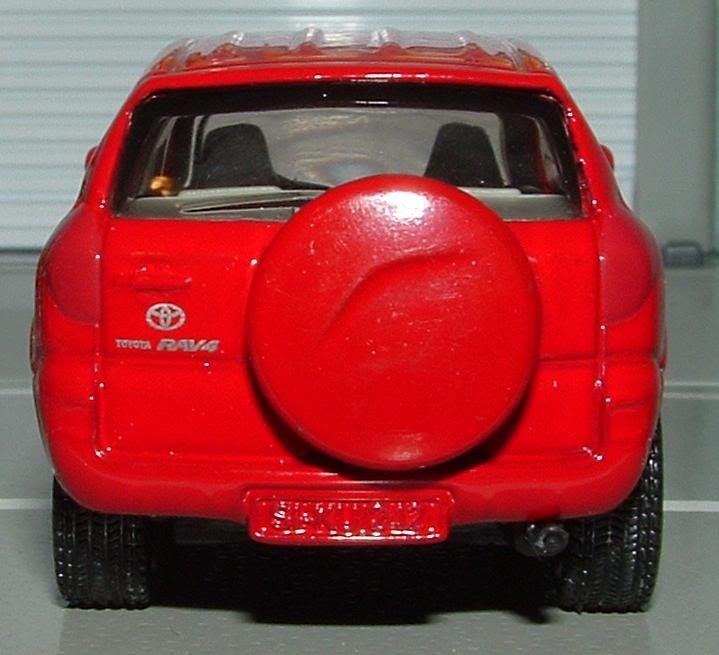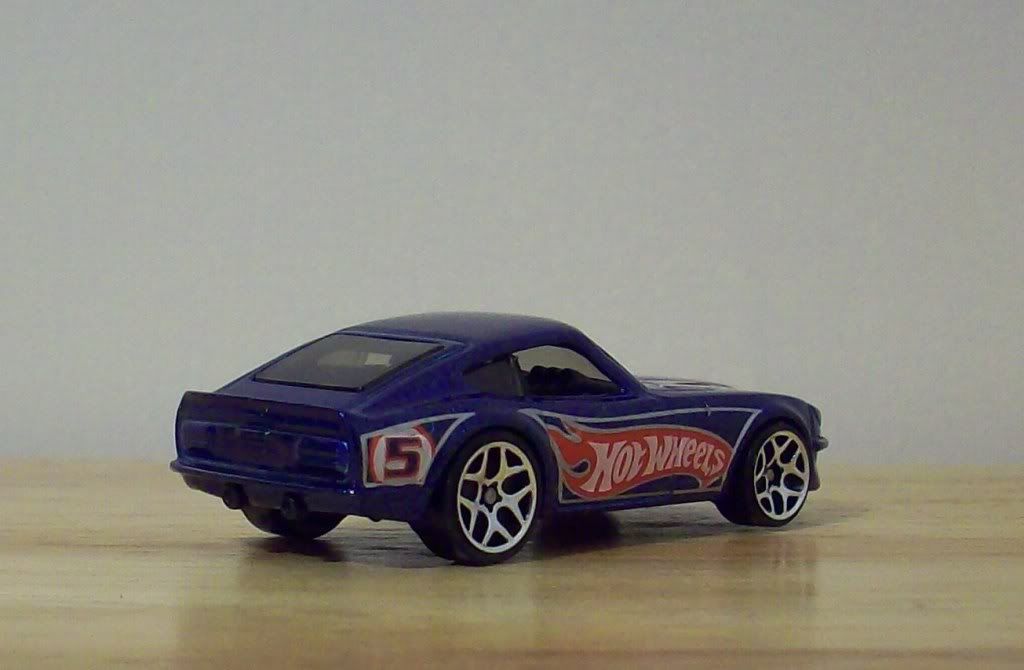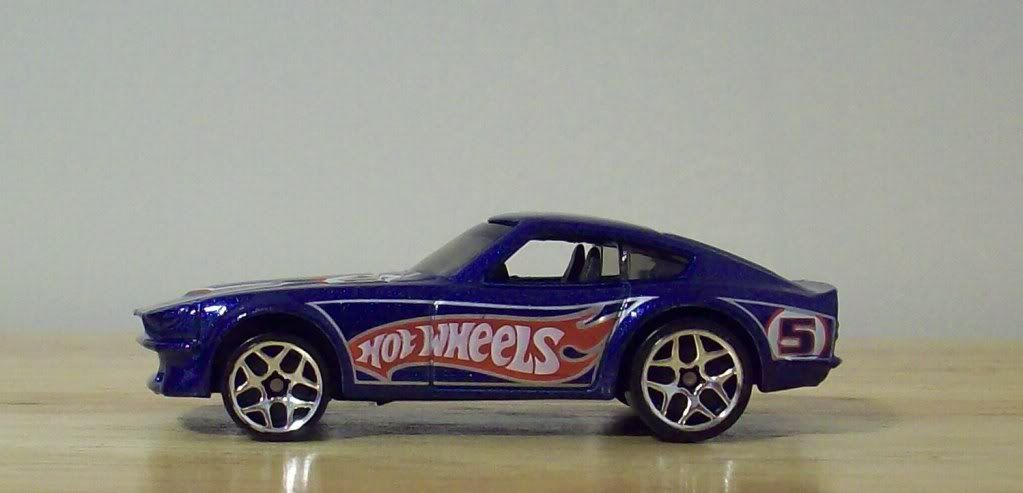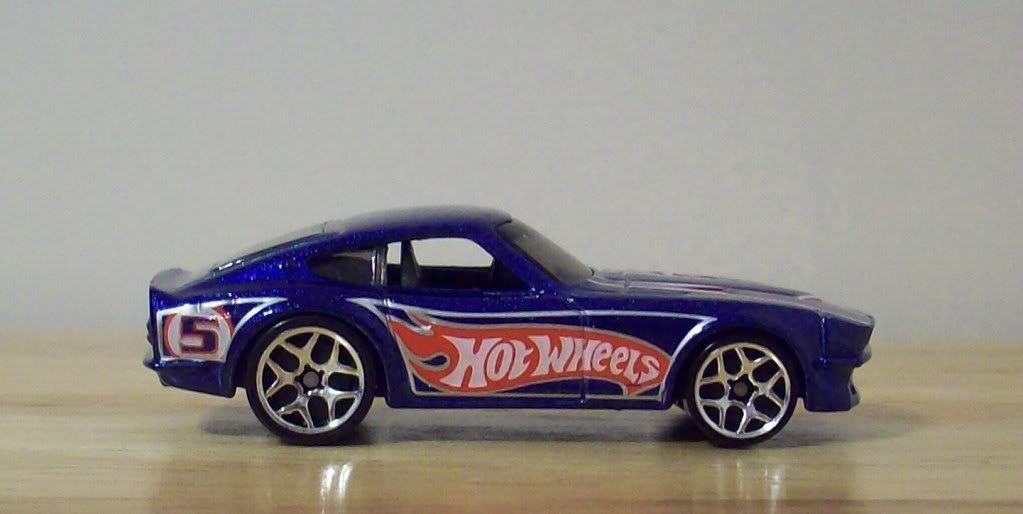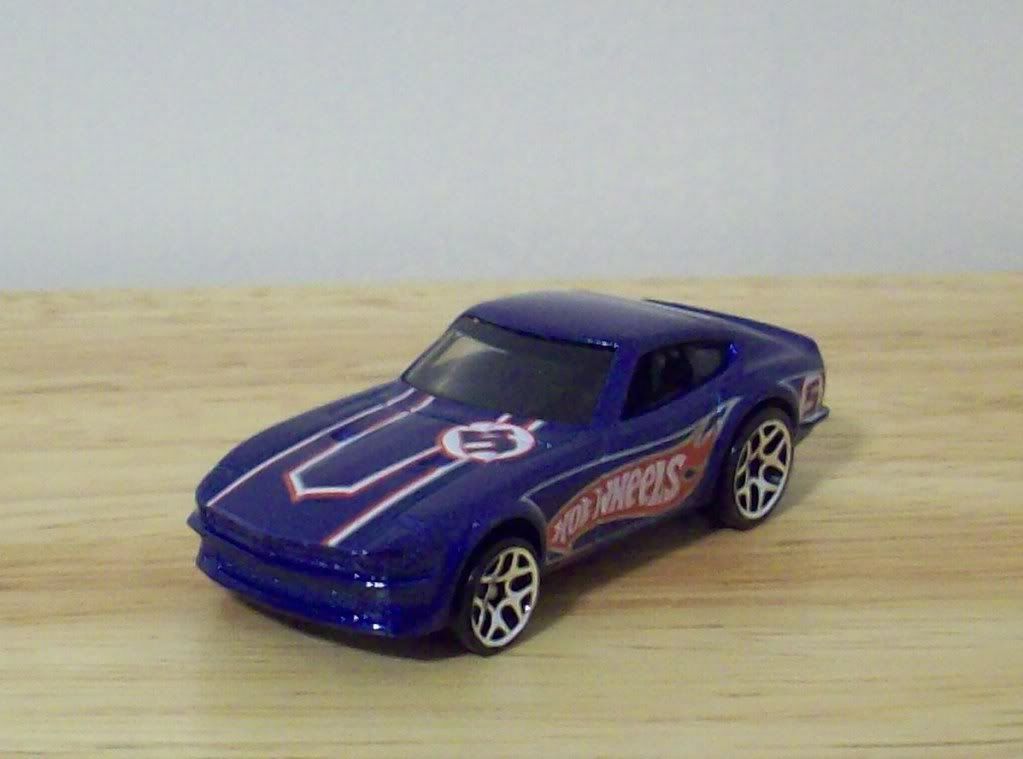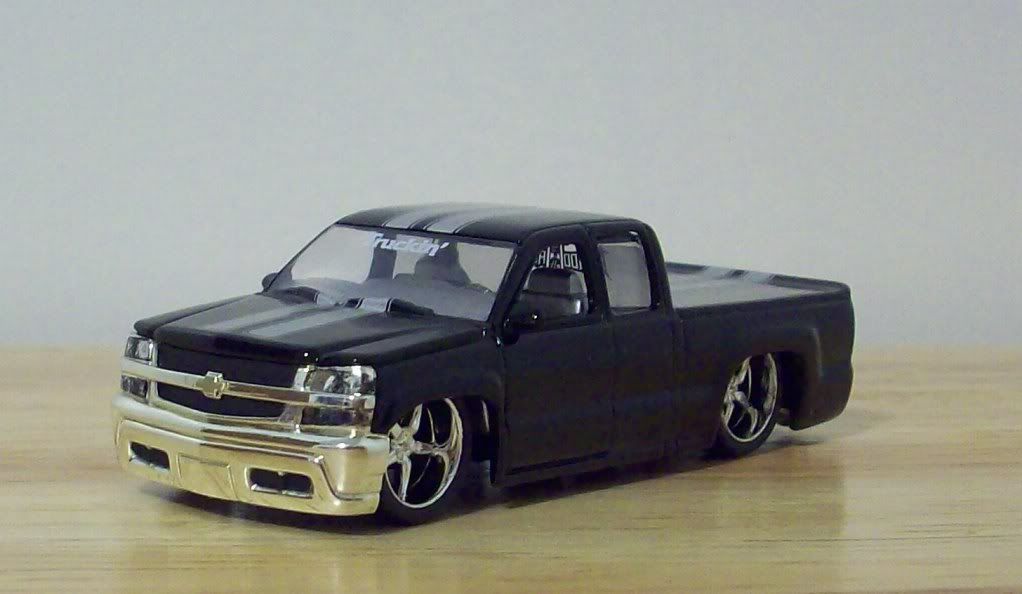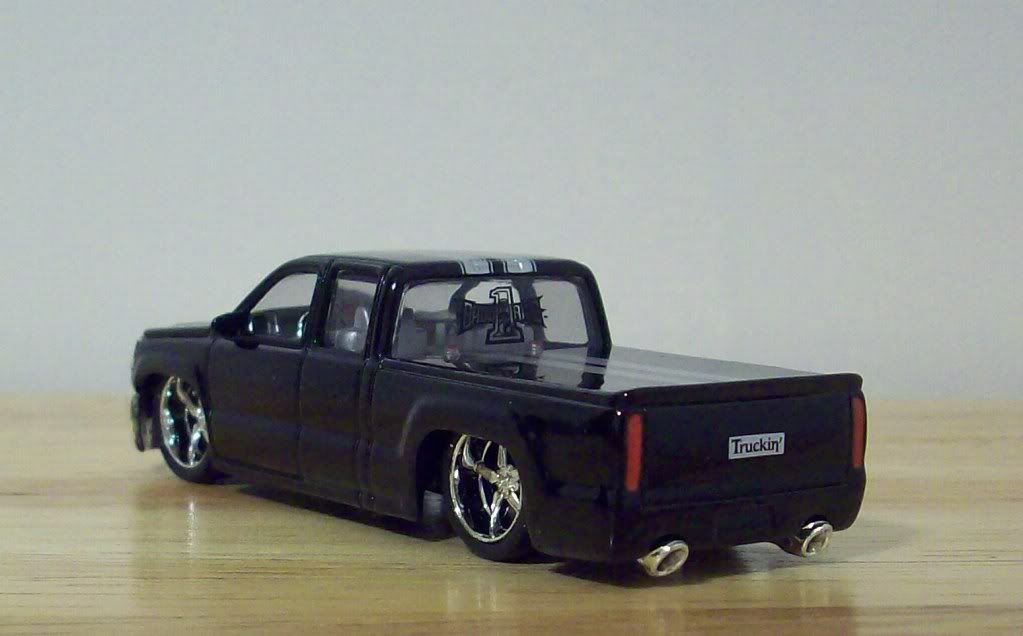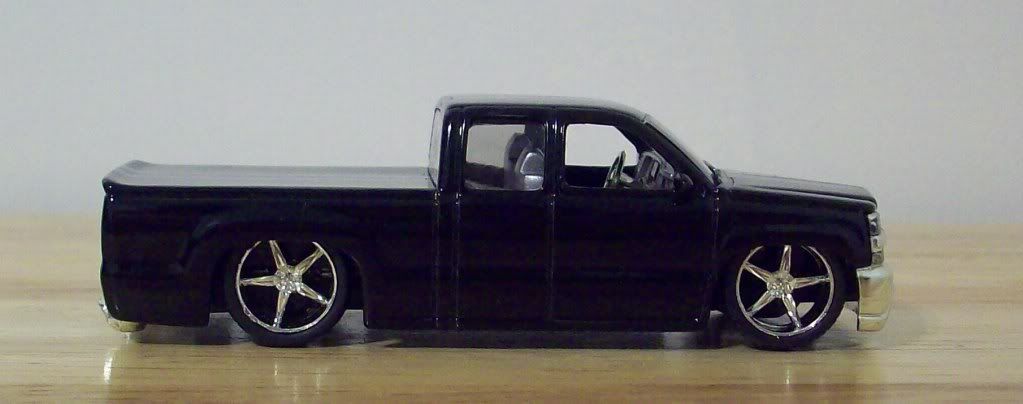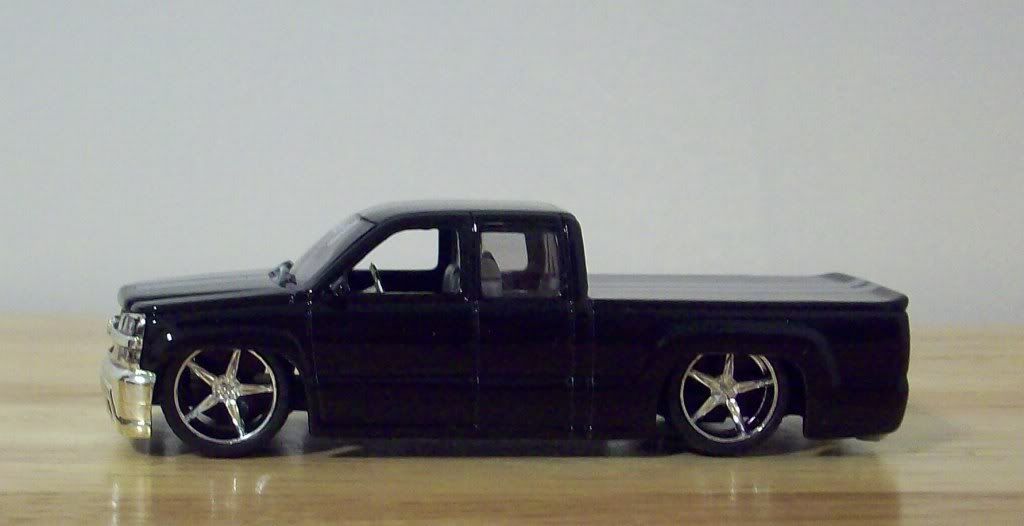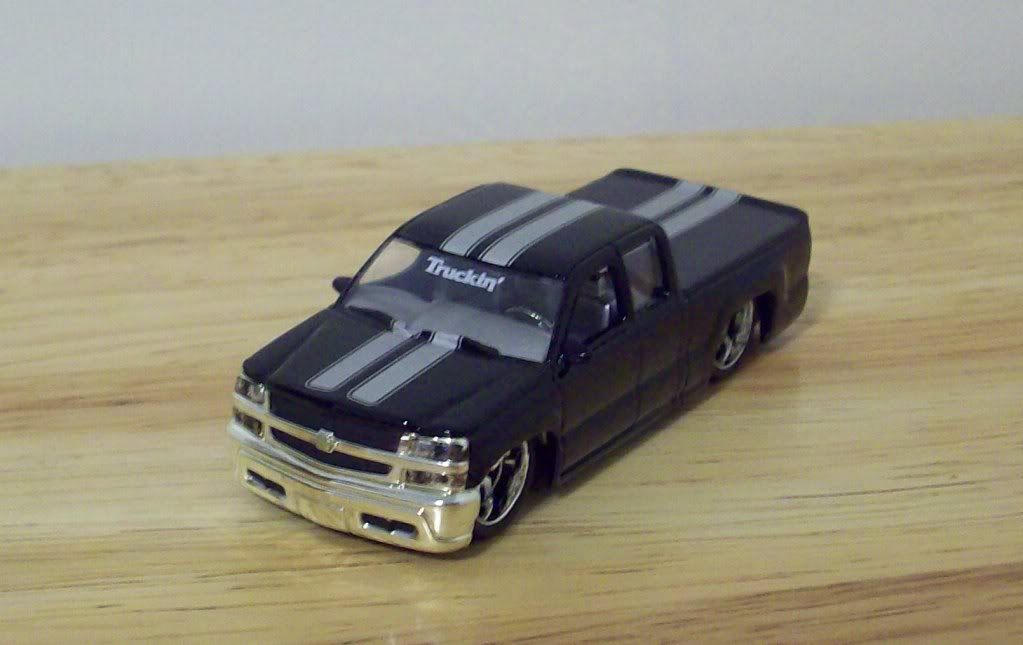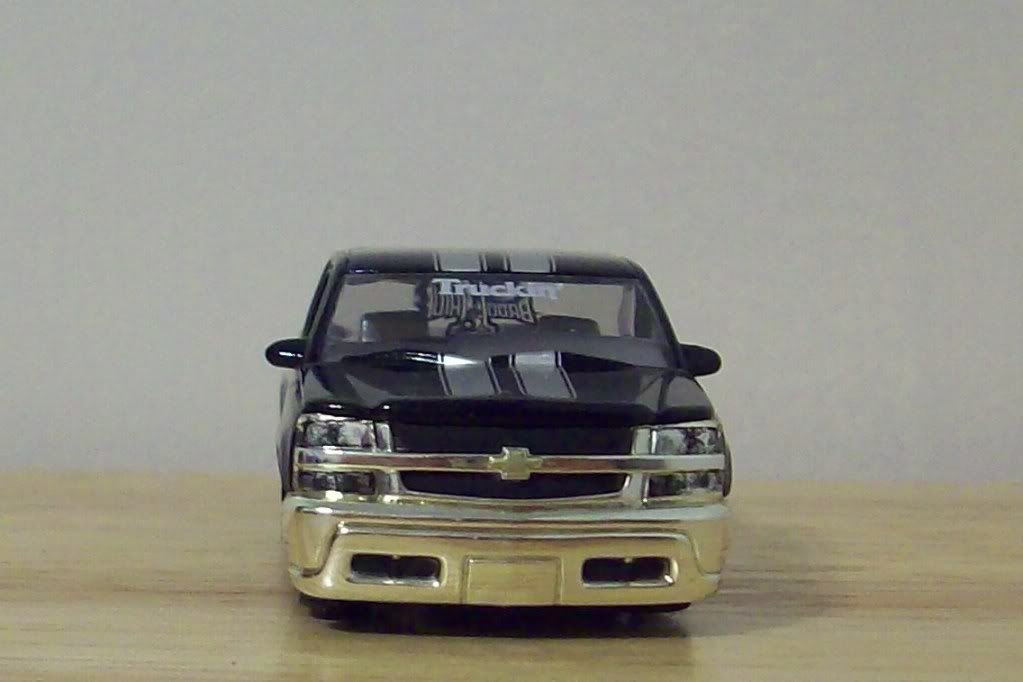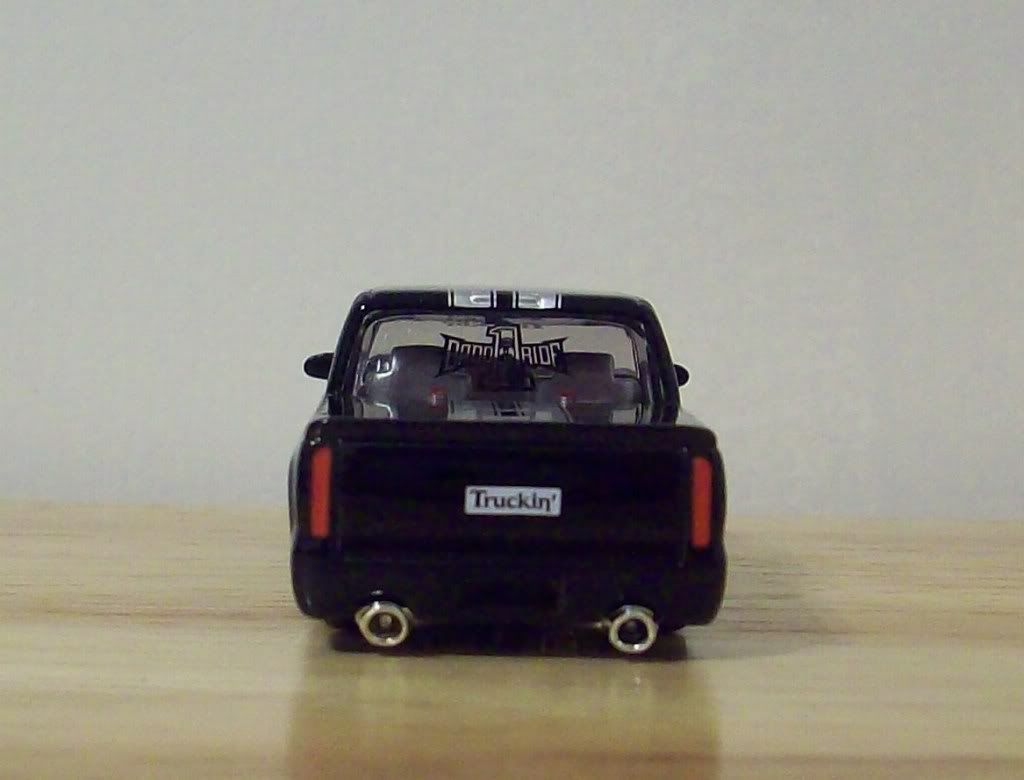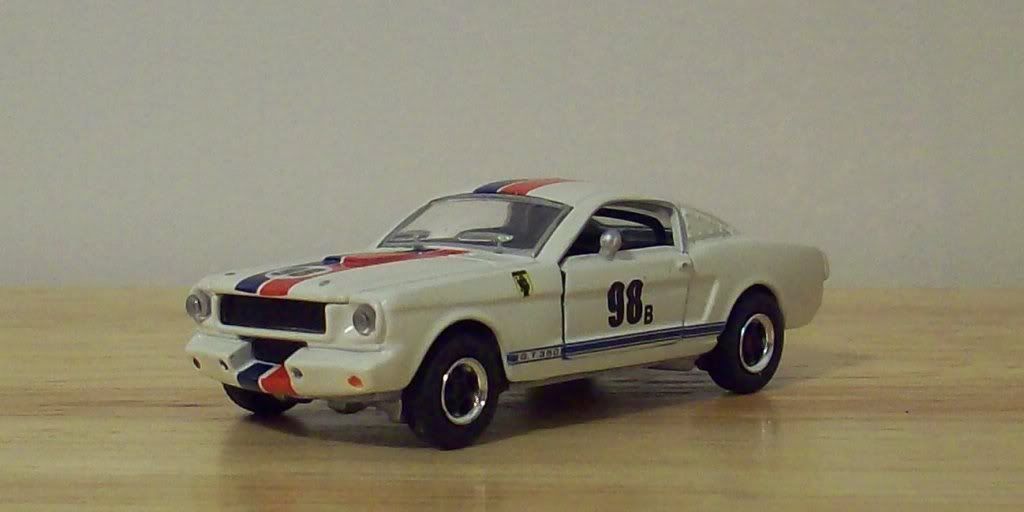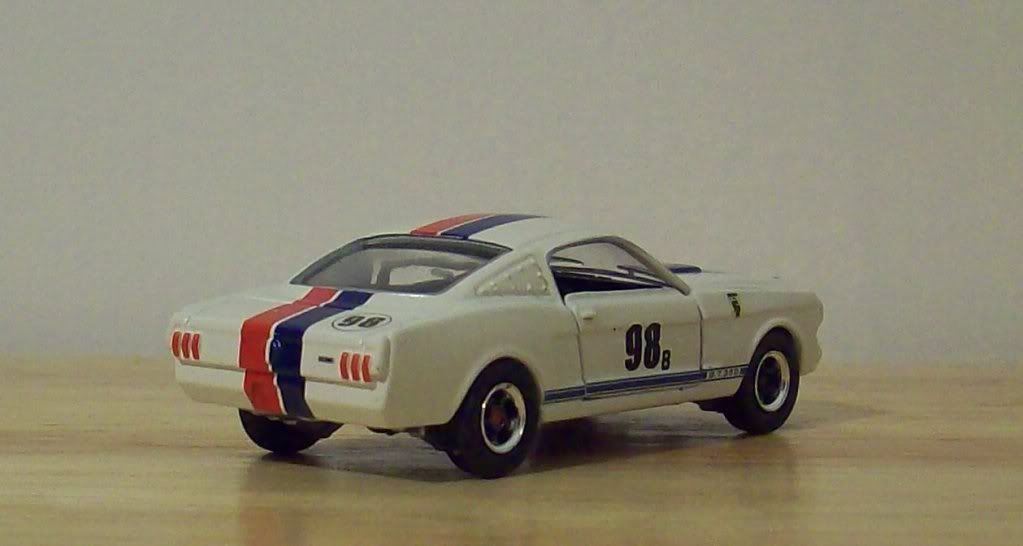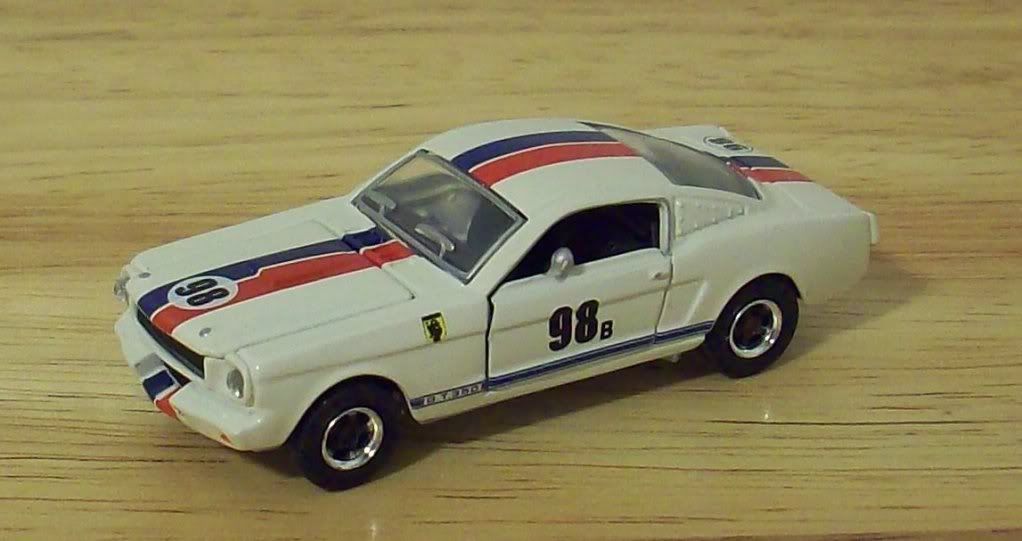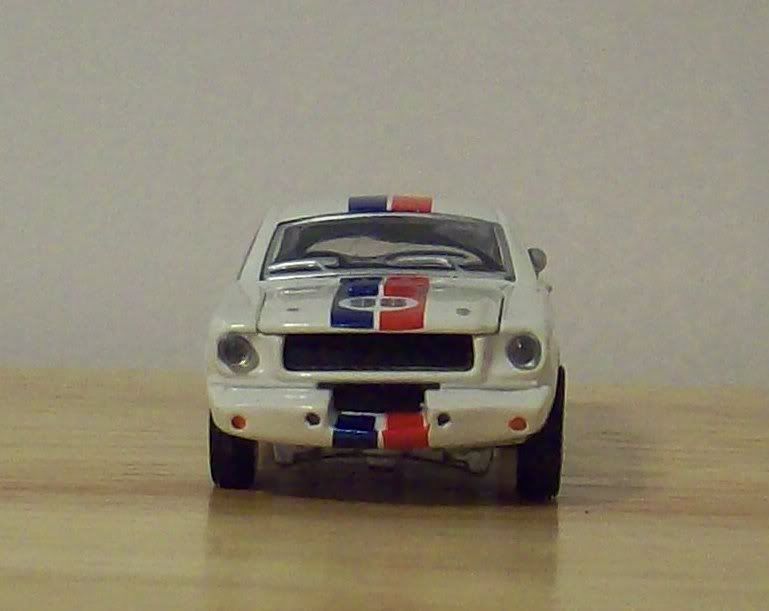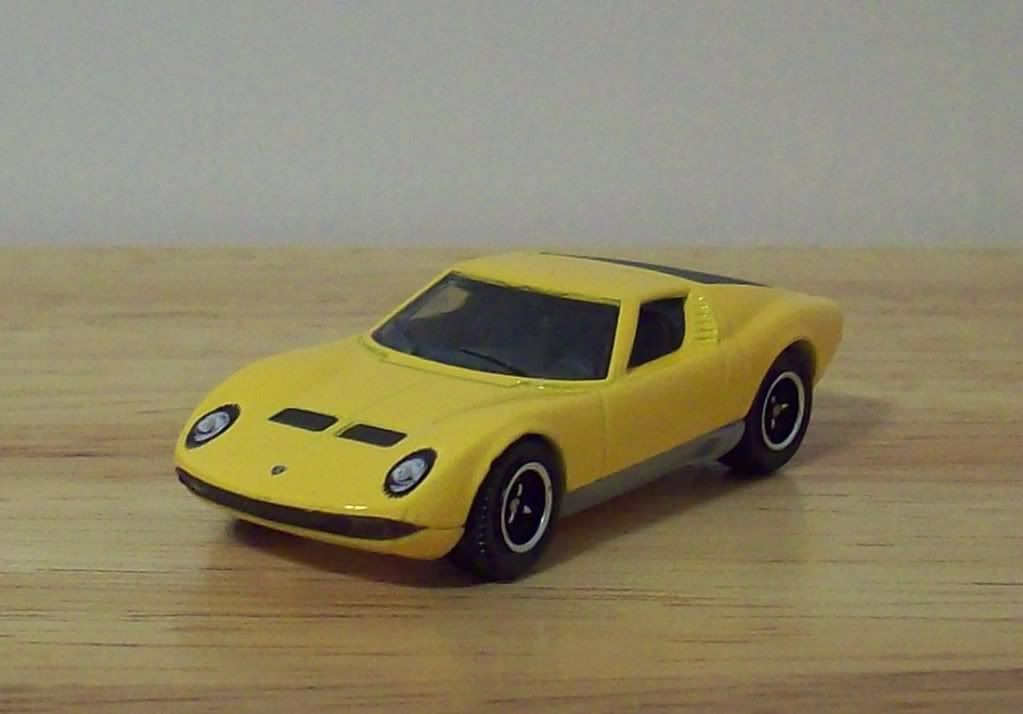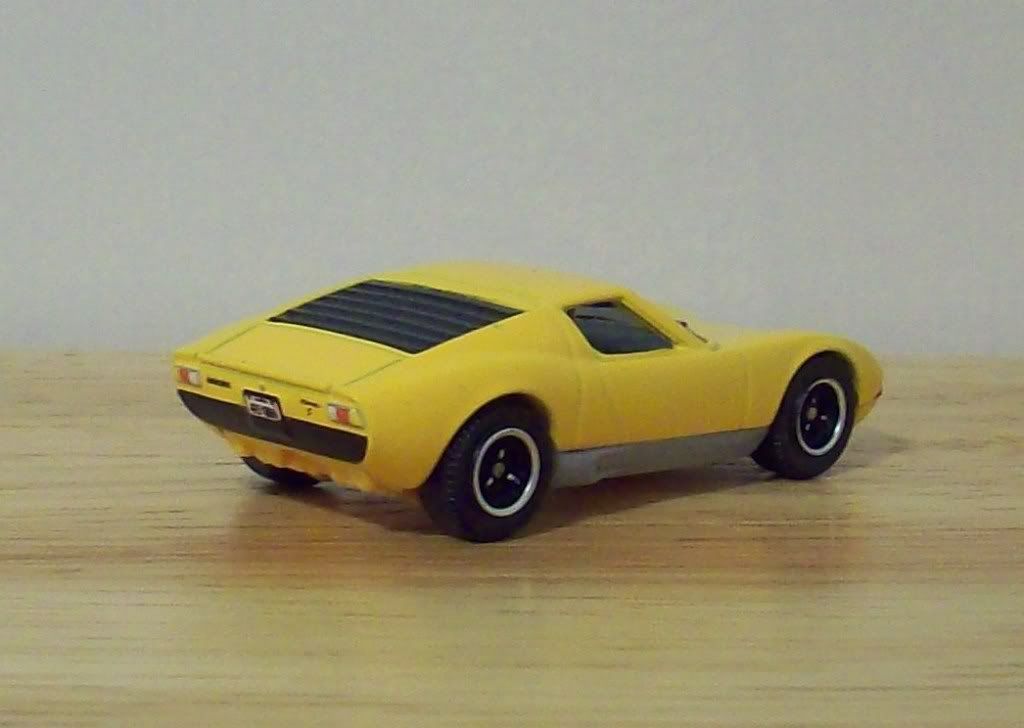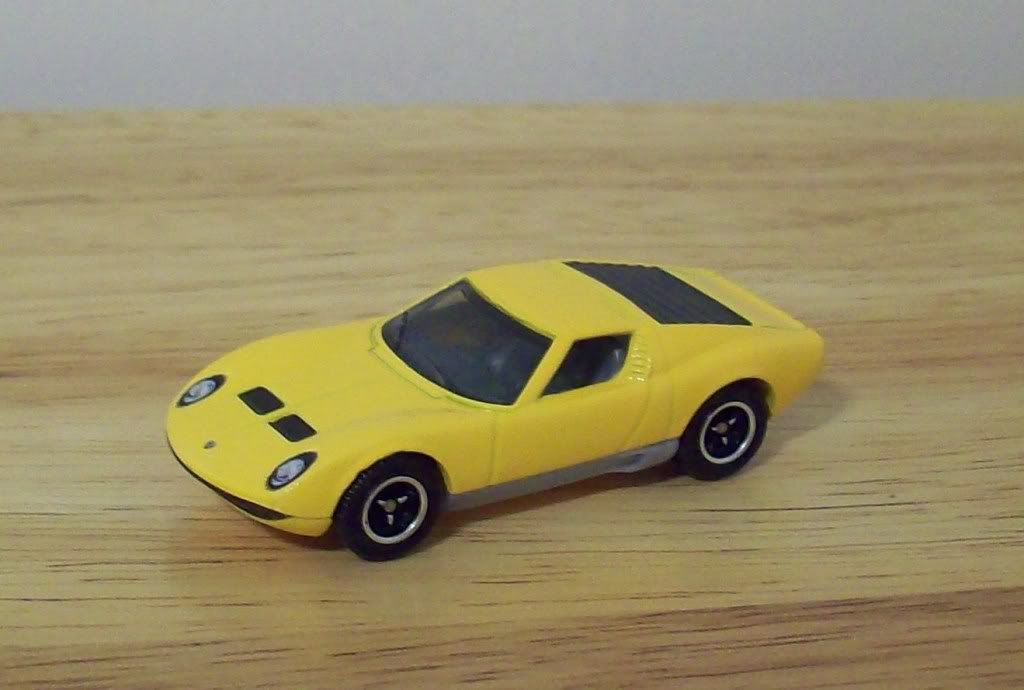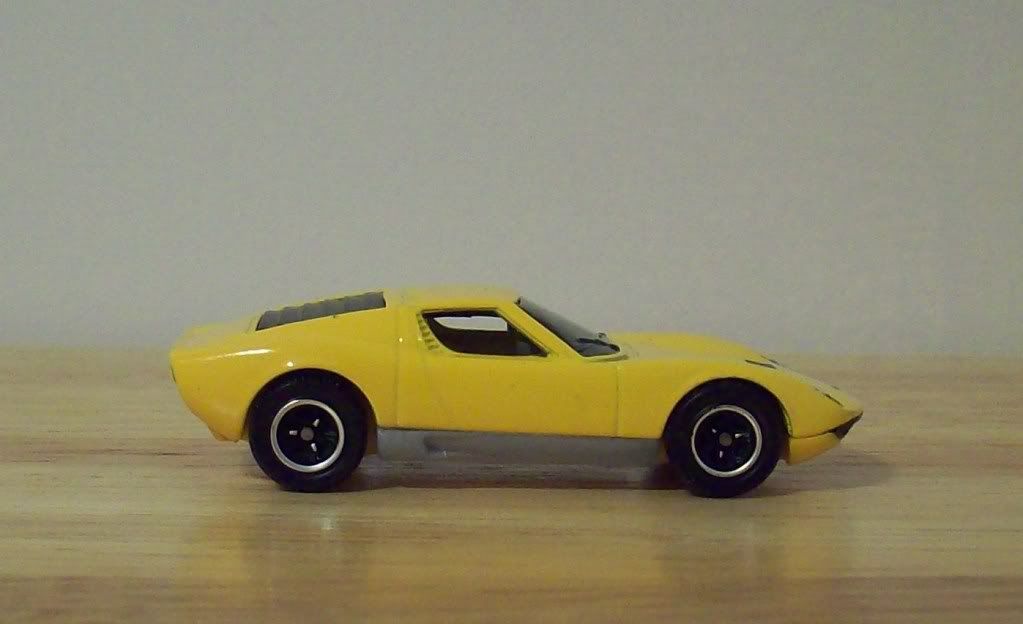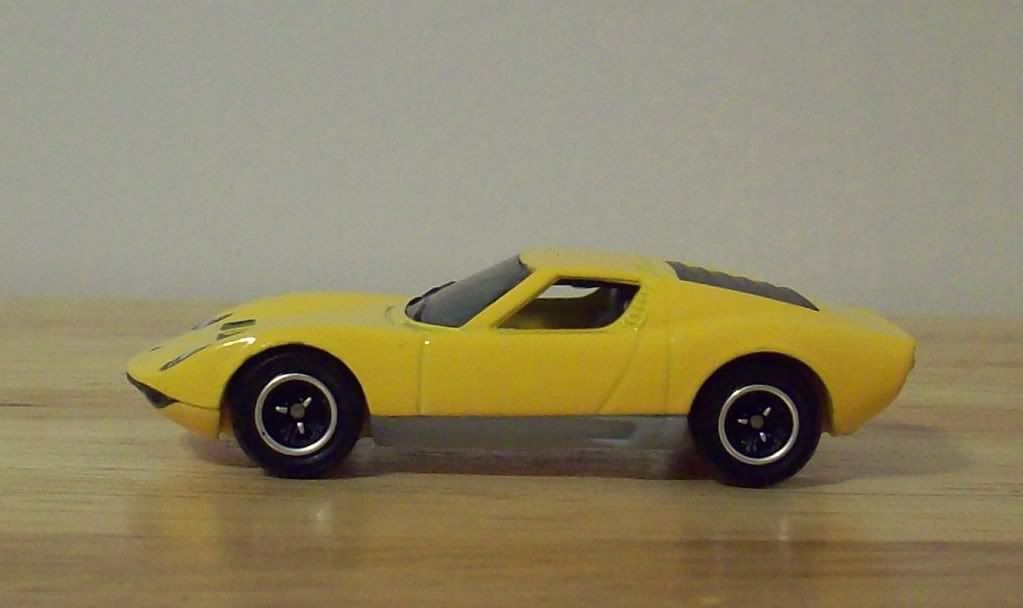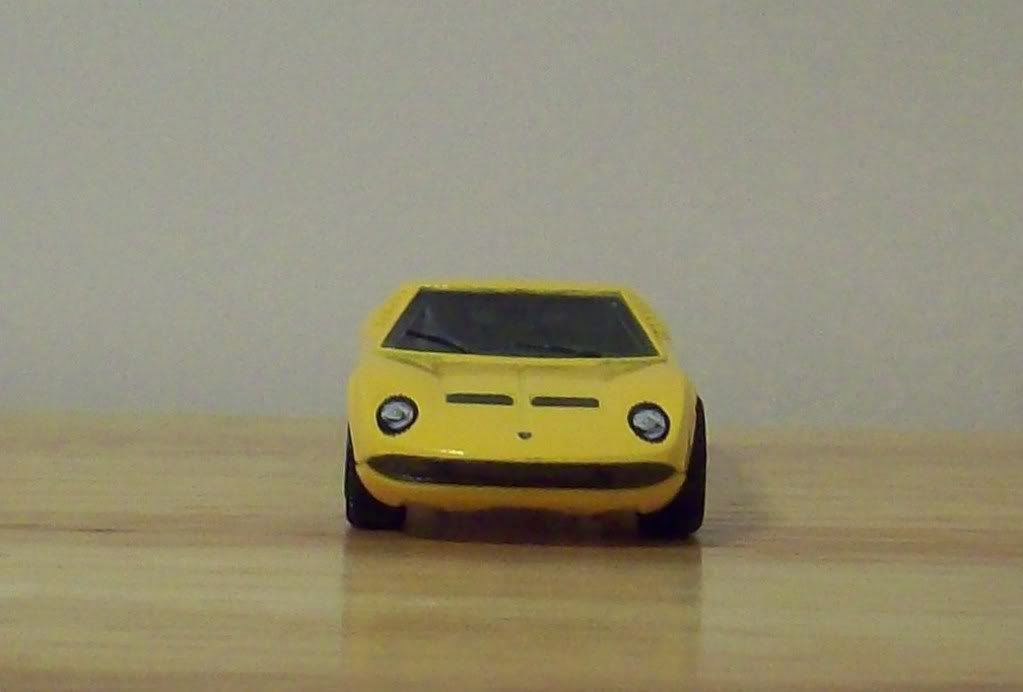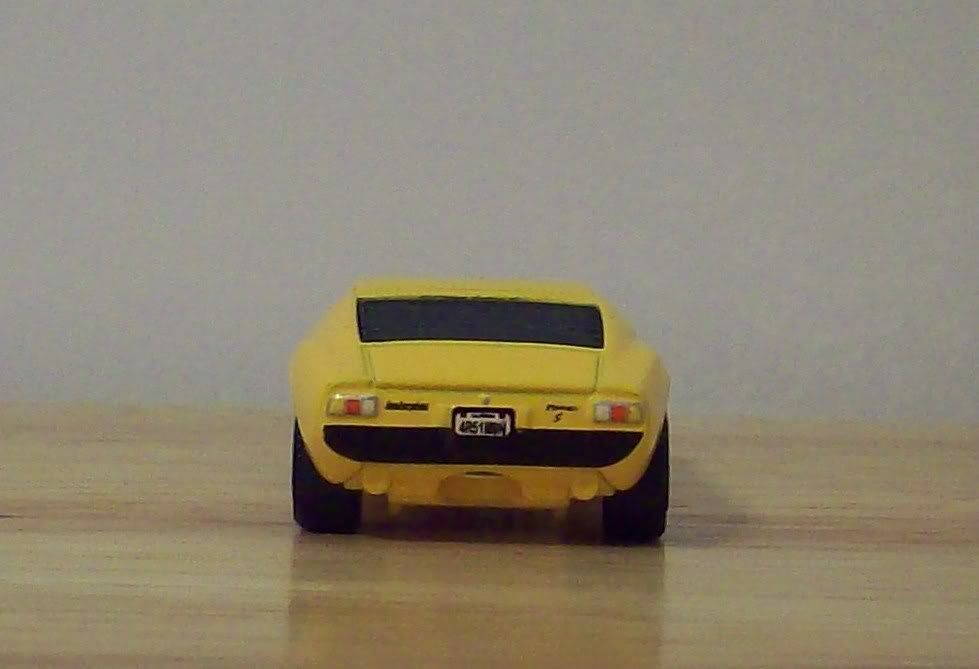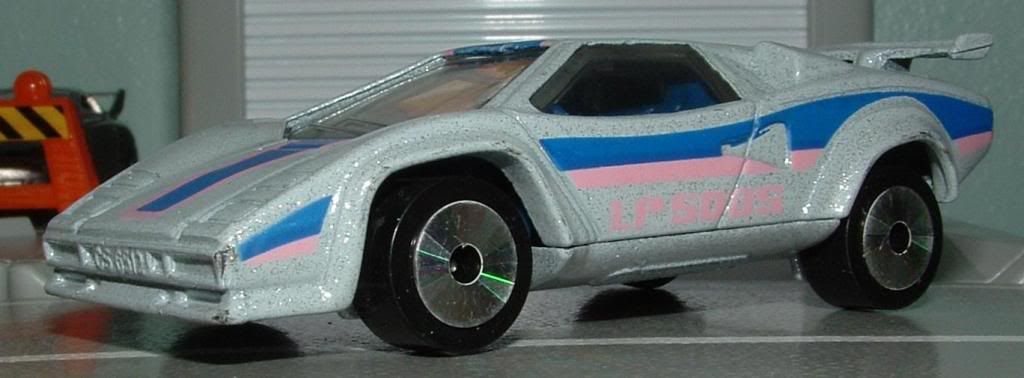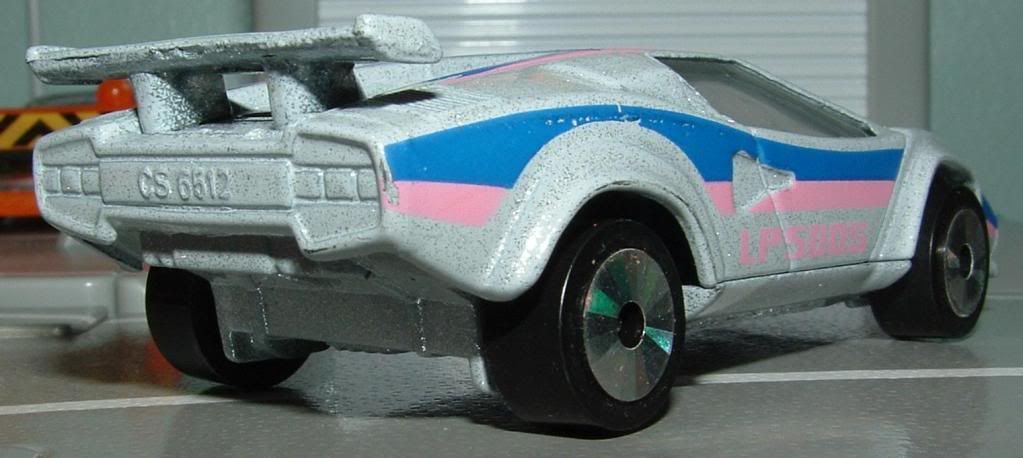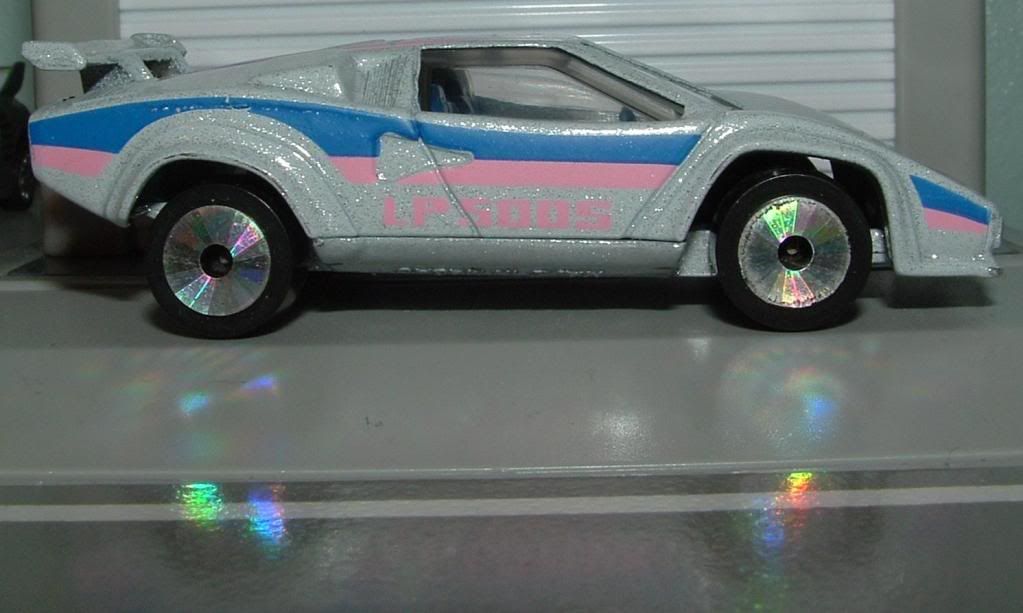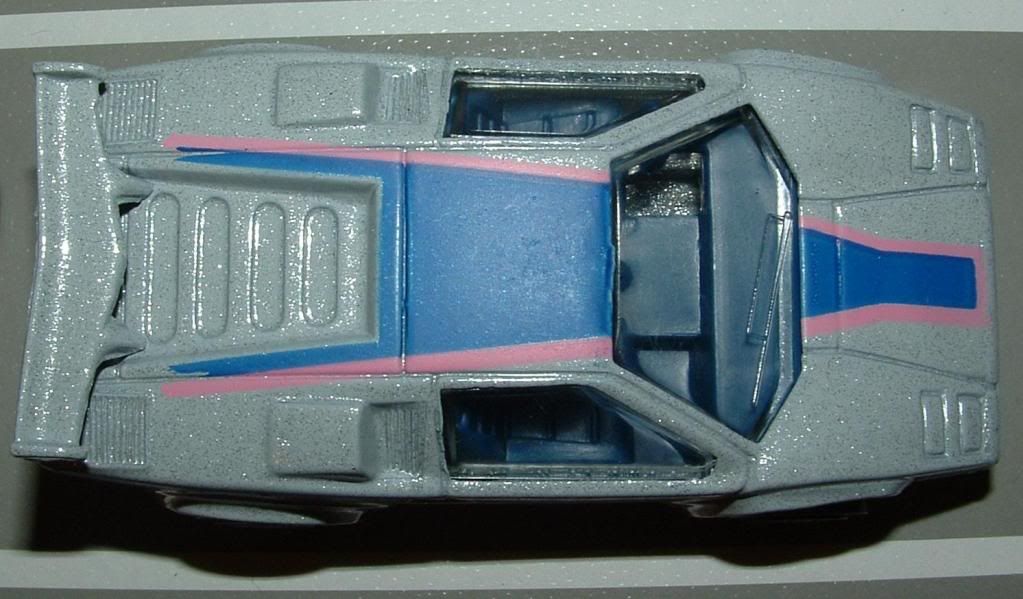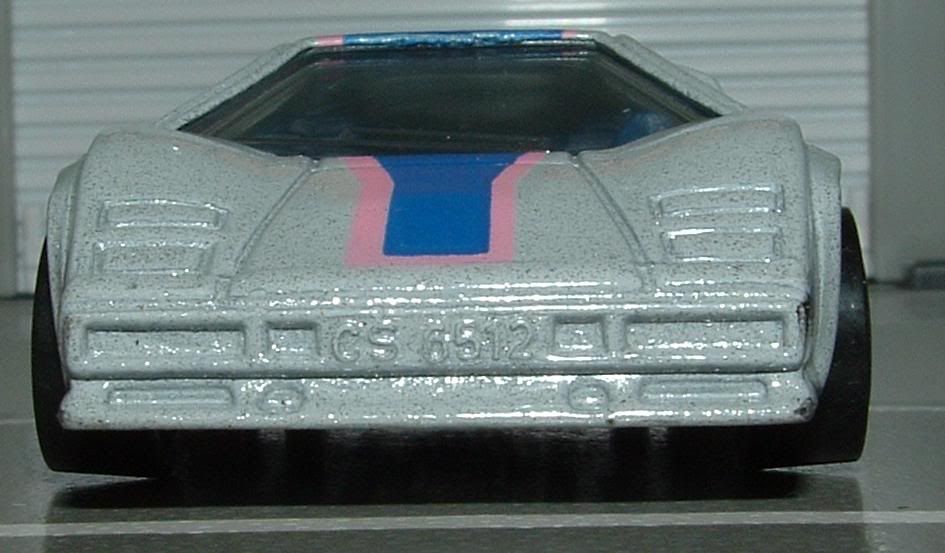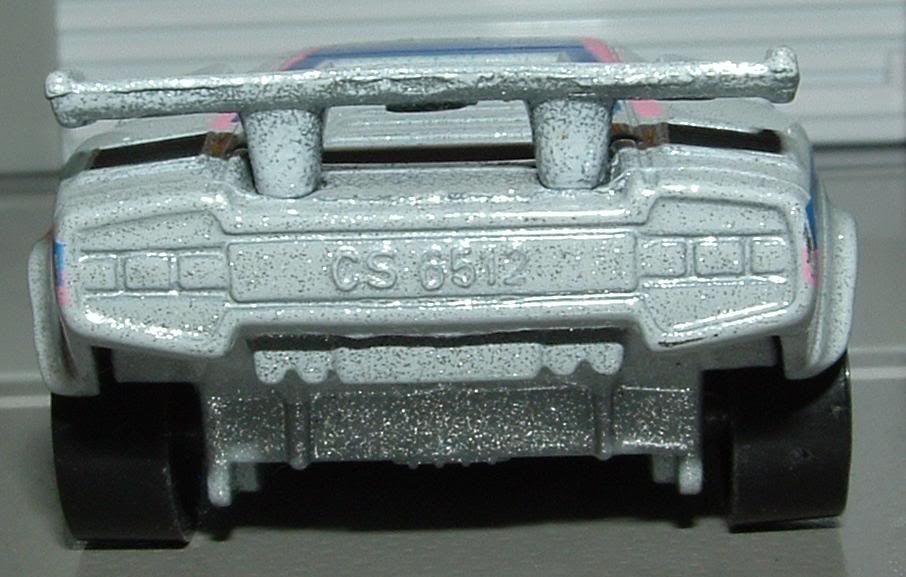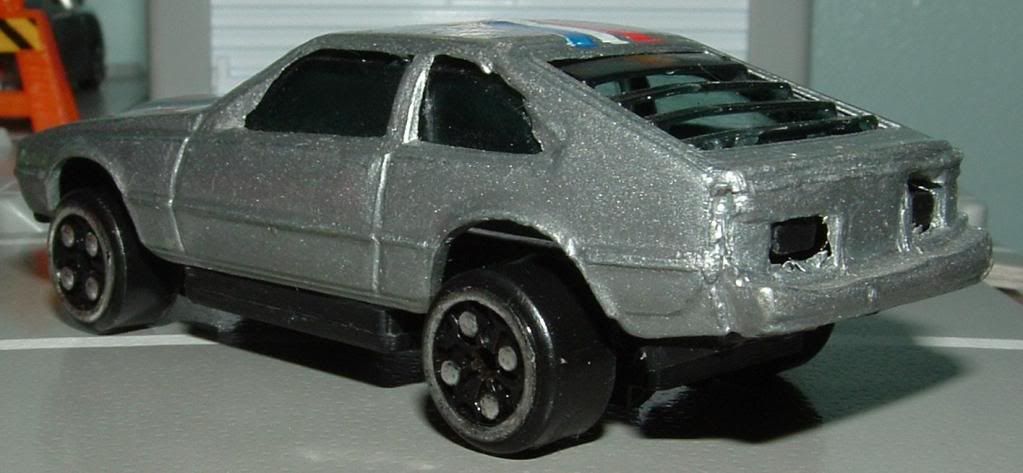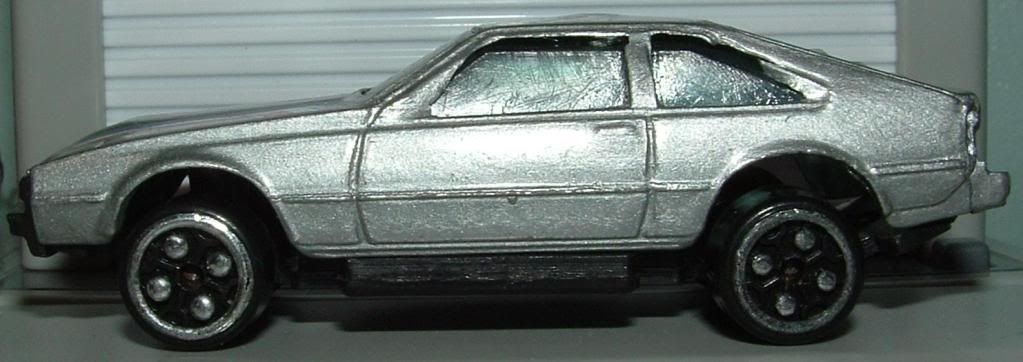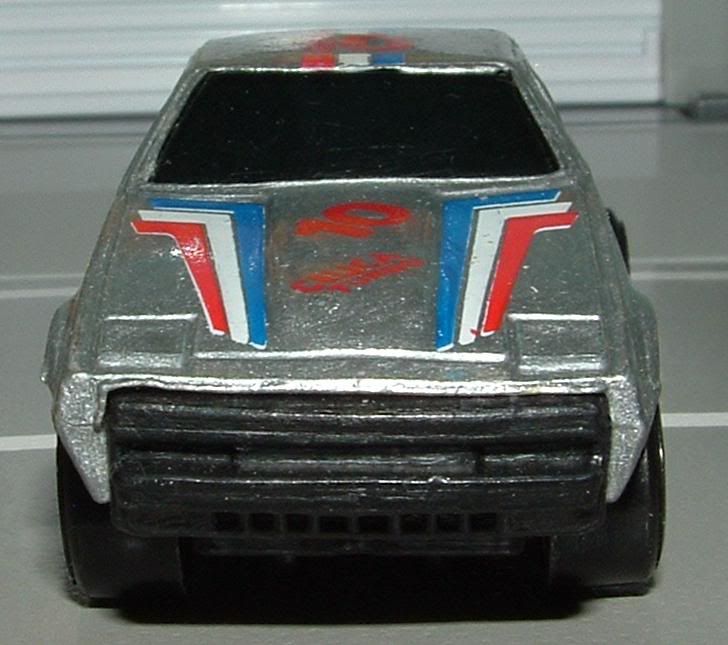
A blog focusing on 1/64 diecast from such popular brands as Hot Wheels, Matchbox, Johnny Lightning, M2 Machines, GreenLight, Tomica, Yat Ming, Majorette, MotorMax, Siku, Corgi, Guisval, Playart, Ertl, Zylmex, Racing Champions, & many more. Swifty's Garage features a daily Car Of The Day and news updates from your favorite brands!
Saturday, April 30, 2011
Car Of The Day: April 30, 2011
Today's car of the day is Universal's 1979 Mercedes-Benz 450SEL 6.9.
The Mercedes-Benz 450SEL 6.9 is a high-performance version of the S-Class luxury saloon. It was built on its own assembly line by Daimler-Benz in Stuttgart, Germany and based on the long-wheelbase version of the W116 chassis introduced in 1972. The model was generally referred to in the company's literature as the "6.9", to separate it from the regular 450SEL.
The 6.9 was first shown to the motoring press at the Geneva Auto Show in 1974, and produced between 1975 and 1981 in extremely limited numbers. It was billed as the flagship of the Mercedes-Benz car line, and the successor to Mercedes-Benz's original high-performance sedan, the 300SEL 6.3. The 6.9 also has the distinction of being among the first vehicles ever produced with optional electronically-controlled anti-lock brakes, first introduced by Mercedes-Benz and Bosch in 1978. The 6.9's successor — the top of range 500 SEL — continued the 6.9's remarkable self-leveling hydropneumatic suspension as an extra-cost option.
For more information and pictures of the real car please visit: Mercedes-Benz 450SEL 6.9
Universal, owners of Kidco and eventually Matchbox and Kenner Fast 111s, put out this sad example of the 450SEL. Probably inspired by the Matchbox casting (both missed the mark compared to the Tomica and Yat Ming versions) even though this casting debuted before the Universal acquisition of Matchbox. And it has Air Supply...er....Air Squad stickers on the side. This one was a RAOK from bangerkid45 at the Keystone CARnival. Thanks Jon!
The 6.9 was the first Mercedes-Benz to be fitted with the hydropneumatic self-levelling suspension system developed by Citroën in 1955, unlike the 600 and 6.3 which employed air suspensions. Using a combination of fluid-filled struts and nitrogen-filled pressure vessels or "accumulators" in lieu of conventional shock absorbers and springs, the system was pressurized by a hydraulic pump driven by the engine's timing chain. Compared to the new Mercedes-Benz system, Citroën's was belt-driven, exactly like a conventional power steering pump; failure of the Citroën system thus might result in loss of suspension. Conversely, every unit of the 6.9 was shipped with hard rubber emergency dampers that served as temporary springs and allowed the car to be driven in the event of a hydraulic failure. The special hydraulic fluid required by the system was stored in a tank inside the engine compartment. Not only was the system totally self-adjusting, ride height could be altered by a dash-mounted push-pull knob under the speedometer that raised the car an additional two inches (50 mm) for increased ground clearance. NHTSA decreed this feature illegal in the US market, but it could be enabled simply by removing a limiter at the tank-mounted control valve.
The suspension system gave the 4200 pound (1900 kg) car the benefits of a both a smooth ride and handling that allowed it, in the words of automotive journalist David E. Davis, to be "tossed about like a Mini." The car also featured a model W3B 050 three-speed automatic transmission unique to the 6.9 and a standard ZF limited slip differential both for enhanced roadholding performance on dry pavement and enhanced traction in inclement weather.
Four-wheel disc brakes and four-wheel independent suspension were standard across the W116 model range.
Friday, April 29, 2011
SUV Of The Day: April 29, 2011
Today's car of the day is Siku's 2008 Toyota RAV4.
The Toyota RAV4 is a compact crossover SUV from Toyota. It was the first compact crossover SUV, introduced in Japan and Europe in 1994 and beginning sales in North America in 1996. The vehicle was designed for consumers wanting a vehicle that had most of the benefits of SUVs, such as increased cargo room, higher visibility, and the option of full-time four-wheel drive, along with the maneuverability and better fuel economy of a smaller car. Its name stands for "Recreational Active Vehicle with 4-wheel drive", although not all RAV4s have four wheel drive, which is optional in some countries. The early success of the RAV4 paved the way for other compact SUVs such as the Ford Escape and the Subaru Forester.
In most countries, the RAV4 is the only compact SUV from Toyota. In other markets, it is the crossover counterpart of the FJ Cruiser. Since the 2006 third generation model, Toyota has offered both short- and long-wheelbase versions of the RAV4. Short-wheelbase versions are retailed in Japan and Europe, with Australia and North America receiving the long-wheelbase versions. Toyota in Japan also sells the longer version as the Toyota Vanguard.
For more information and pictures of the real car please visit: Toyota RAV4
The Siku model seen here features blanked out rear quater windows because this casting does double duty as an ambulance/emergency vehicle. This one joins my collection courtesy RAOK from Dragnet_Suppoter at this year's Keystone CARnival. Thanks Robert!
The Toyota RAV4 was completely redesigned for the 2006 model year, using an all-new platform and was first unveiled at the 2005 Frankfurt Motor Show. The new RAV4 uses an Electric Power Steering (EPS) system.
The third generation RAV4 is offered in two versions: a short- or a long-wheelbase model. The short-wheelbase model is sold only in Japan and Europe, with the long-wheelbase RAV4 sold in Australia and North America. Since 2007, the extended-length RAV4 is also sold alongside its shorter counterpart in Japan as the Toyota Vanguard, albeit with a revised front-end body work incorporating a revised grille, bumper, bonnet and headlamps.
Japanese models went on sale in 2005 at Toyota Netz dealers. The 2-door was dropped beginning with 2007 model, leaving Toyota without a mini SUV until the 2009 Toyota Urban Cruiser, which is sold only in Europe.
It is also the first generation of RAV4 to be offered in regular (for Asian and European markets, dropping the spare wheel from the rear) and extended (for North American and Australian markets) versions. The extended-length RAV4 is larger by 21% in interior volume from the last generation and now has an available third-row seat for two small children (North America only). The RAV4 can still be had in either front-wheel-drive or all-wheel-drive in North America and Japan; however most countries only sell the all-wheel-drive version.
In 2008 (MY 2009) RAV4 was given a mid-cycle refresh in some markets, featuring a number of changes, including an all-new 4-cylinder engine, and a redesigned front end and tweaked rear end. The Limited model gets a different front grille and bumper cover from other models. The Sport model features a bigger spoiler and red badging along with an option on the V6 model to have a rear door without the externally-mounted spare tire (run-flat tires are used on this model). New features/options include turn signal mirrors, backup camera (with monitor built into rear view mirror), satellite navigation, smart keyless entry, a push button start , a multifunction meter display, etc. Much of the interior remains the same. In 2009, it was also the first time for the Canadian market to have a 2WD model sold in Canada.
Thursday, April 28, 2011
Car Of The Day: April 28, 2011
Today's car of the day comes from Firehawk73's collection and is Hot Wheels 1971 Datsun 240Z.
The Nissan S30 (sold in Japan as the Nissan Fairlady Z and in other markets as the Datsun 240Z, then later as the 260Z and 280Z) was the first generation of Z GT 2 seat coupe, and later (beginning in the 1974 model year) also 2+2 hatchbacks produced by Nissan Motors, Ltd. of Japan from 1970 to 1978. It was designed by a team led by Mr. Yoshihiko Matsuo, the head of Nissan's Sports Car Styling Studio. HLS30 was the designation of the left-hand drive model and HS30 for the right-hand drive model.
For more information and pictures of the real car please visit: Datsun 240Z
This racing tuned Datsun is a nice pick from Hot Wheels. They've done a few other modified vintage Japanese cars in the past few years, mostly ones that are big in the drift or anime worlds. The Toyota AE-86 and Datsun 510 also jump to mind.
The 1970 240Z was introduced to the American market by Yutaka Katayama, president of Nissan Motors USA operations, widely known as Mr. K. The 1970 through the mid-1971 model year 240Z was referred to as the Series I. These early cars had many subtle but notable features differing from later cars. The most easily visible difference is that these early cars had a chrome "240Z" badge on the sail pillar, and two horizontal vents in the rear hatch below the glass molding providing flow through ventilation. In mid-1971, for the Series II 240Z cars, the sail pillar emblems were restyled with just the letter "Z" placed in a circular vented emblem, and the vents were eliminated from the hatch panel of the car. Design changes for the U.S. model 240Z occurred throughout production, including interior modifications for the 1972 model year, and a change in the location of the bumper over-riders, as well as the addition of some emission control devices and the adoption of a new style of emissions reducing (and performance compromising) carburetors for the 1973 model year.
The 1970 models were introduced in October 1969, received the L24 2.4 liter engine and a 4-speed manual. A less common 3-speed automatic transmission was optional from 1971 on, and had a "Nissan Full Automatic" badge.
In 2004, Sports Car International named this car number two on the list of Top Sports Cars of the 1970s. One of the most appealing Japanese cars ever produced, it nevertheless disappeared almost entirely from American roads within two decades, presumably because like most Japanese cars of the time it had insurmountable rust issues.
From 1996 to 2002 Nissan did not offer the Z car line except in Japan where they sold the 300ZX (Z32) until 2000 as the Fairlady Z. In 1998 Nissan launched a program to bring back the Z car line. They began to purchase original 240Zs and restore them to factory specifications and sell them to dealerships for $24,000. This was in efforts to keep Z-interest alive. Furthermore, in 1999 a concept car was shown to the public in a plan to return to the fundamentals that made the 240Z a market success.
Wednesday, April 27, 2011
Truck Of The Day: April 27, 2011
Today's car of the day comes from Firehawk73's collection and is 1 Badd Ride's 2003 Chevrolet Silverado.
The Chevrolet Silverado (along with its GMC counterpart, the GMC Sierra), is the latest line of full-size pickup trucks from General Motors
For more information and pictures of the real car please visit: Chevrolet Silverado
Nice looking ride from 1 Badd Ride. The slammed stance, bling rims, and the fart can exhausts aren't to my taste, but the rest of the casting is quite nice.
Although General Motors introduced its first pickup truck in 1930, the term "Silverado" was a designation used only to detail the higher level trim for the Chevrolet C/K pickup trucks and Suburbans from 1975 through 1999. GMC used a few variations of the "Sierra" name (Sierra, High Sierra, Sierra Grande, Sierra Classic) to distinguish the different trim levels through 1987, though the "C/K" nomenclature was continued through 1999. "C" (or "R" for 1987) trucks had rear-wheel drive while "K" (or "V" in 1987) models had four-wheel drive. Both Chevrolet and GMC dropped the "C" and "K" designations in 1999. However Chevrolet still uses the CK and the CC in their current model codes.
The Chevrolet Silverado and GMC Sierra trucks have been essentially the same for their entire history. The Silverado today is generally advertised as the "lower" version, while the Sierra has more luxury options. There are some trim and option variations as well. Early models included variations in the engine and equipment, but the present differences are slight. The 1999 redesign included different grilles and interior trim, and certain features (e.g. Quadrasteer) were included at different times on the two trucks.
The GMT800 Silverado/Sierra 1500 (light pickup trucks) were released in 1998 as 1999 models. The "classic" light-duty GMT400 C/K trucks were continued in production for that first year alongside the new models, and the Heavy-Duty GMT400 pickups (alongside the GMT400 SUVs) were continued through 2000, with the new GMT800 Silverado/Sierra HD (Heavy Duty) introduced in 2001.
There are a number of models of light-duty Silverados and Sierras, including the half-ton, SS, and Hybrid.
The light-duty trucks generally use the 1500 name. They are available in three cab lengths, 2-door standard/regular cab, 3 or 4-door extended cab, and front-hinged 4-door crew cab. Three cargo beds are available, including a 69.2 in (1757.7 mm) short box, 78.7 in (1999 mm) standard box, and a 97.6 in (2479 mm) long box. The short box is only available with the extended or crew cab, and is the only option on the latter.
For the first year, only the regular cab and 3-door extended cab were available, along with the Vortec 4300 V6, Vortec 4800 V8, and the Vortec 5300 V8. A 4-door extended cab was added for 2000, and output on the 5.3 L engine increased to 285 hp (213 kW) and 325 lb·ft (441 N·m).
The 6.0 L Vortec 6000 V8 was added for the 2001 Heavy Duty models, rated at 300 hp (224 kW), with the GMC Sierra 1500 C3 getting an uprated 25 hp (19 kW) version of this engine. The Silverado Z71 got an optional lighter composite box, with a suspension package for towing, but lacked the high-output engine. The C3 became the Denali for 2002, and Quadrasteer was added.
GM made a reworked version of the Silverado/Sierra in 2003, with a new front end, and a slightly updated rear end.
Tuesday, April 26, 2011
Car Of The Day: April 26, 2011
Today's car of the day comes from Firehawk73's collection and is Shelby Collectibles' 1965 Shelby GT-350.
The Shelby Mustang is a high performance variant of the Ford Mustang which was built by Shelby American from 1965 through 1970. Following the introduction of the fifth generation Ford Mustang, the Shelby nameplate was revived in 2007 for new high performance versions of the Mustang.
For more information and pictures of the real car please visit: Shelby GT-350
Shelby Collectibles are among the nicest brands currently available. Opening hoods and doors always get bonus points from me. And being that they deal almost exclusively in Shelby vehicles is always a bonus for a Mustang lover such as myself. Every time I think they've reached the end of the available cars to produce they surprise me with a new casting, or (as happened tonight) I stumble across one while searching for info. I knew there were six (four per the Wikipedia article) convertibles produced, but Shelby has yet to offer a replica of those. The new one though is the Shelby Europa, a car available only in Europe in 1971-72, and yes, based on the '71 restyle. Considering Shelby and Ford had parted ways in 1969, that was a rather surprising development. And would make a fantastic replica, also!
The 1965-1966 cars were the smallest and lightest of the GT 350 models. These cars are often improperly called "Cobras", which was the Ford-powered AC-based two-seat sports car also produced by Shelby American during the same period. The confusion arises from the use of the Cobra emblem, the paint scheme, and optional "Cobra" valve covers on many GT350s (part of a marketing tie-in by Shelby as well as one of his iconic symbols). All 1965-66 cars featured the K-Code 271 hp 289, modified to produce 306 hp. 1965-1966 G.T. 350s were delivered from Ford's San Jose assembly plant in body in white form for modification by Carroll Shelby's operation, originally in Venice Beach and later at Los Angeles International Airport. San Jose Cars carried a "R" in the ford VIN denoting that facility. The only year that Shelby Mustangs from the 1960s came from another plant was 1968 where they came from New Jersey "T" in the VIN, and were modified by A.O. Smith.
All 1965 G.T. 350s were painted Wimbledon White with Guardsman Blue rocker stripes. Contrary to popular belief, very few GT350s were delivered with the optional "Le Mans" (or "LeMans") top stripes, which run the length of the entire car. According the current Shelby American registry, approximately 28% of the 1965 cars built had LeMans stripes. Today, it's difficult to find a GT 350 not so equipped. Many 1965 cars had the battery relocated to the trunk (which was changed mid year from complaints of fumes), featured over-rider traction bars, relocated A-arms, and other modifications. Over-rider traction bars are named so due to their design being on top of the leaf spring as opposed to underneath them.
For 1966, the GT 350 lost its Mustang tag and was marketed simply as the Shelby GT 350. 1966 also saw the introduction of non-white colors—including blue, red, green and black. Other changes include special rear quarter-panel windows replacing the factory extractor vents, functional brake scoops on each side and optional automatic transmissions, as well as the addition of an optional Paxton supercharger. The battery was no longer relocated to the trunk for 1966, and the over-rider traction bars were discontinued. A fold-down rear seat was now optional. Where early 1965 cars had black engine blocks, 1966 and later cars had the 289 ci engine painted Ford dark blue. The first 252 GT 350s for 1966 began as 1965 Mustang K-Code Fastbacks. Often these first 252 1966 G.T.350s are referred to as "carry-over" cars, but this is not the case. These 252 1965 Model Mustangs were specifically ordered by Shelby American for conversion into 1966 GT 350s. They were definitely "left over" from the 1965 production. Upon delivery to the tarmac outside Shelby-American, random cars were pulled for conversion. This is the reason why Shelby VINs do not correspond in numerical order with Ford VINs. The Ford VINs were shipped in 'blocks' but many differ significantly with the order they were taken into the building. Only SAAC knows for sure, but there have been reports that some carry-over VINs have an earlier number than the last '65 Shelby VINs. They had the 1965 Ford Mustang Bodies and 1965 Ford Mustang serial numbers under their Shelby serial numbers. They mostly had 1965 features including standard Koni shock absorbers and engines painted black. Blue engines did not appear in 1966 until after these first 252 GT 350s were produced. 1966 production was 1373 fastbacks, including two prototypes and four drag cars, and 252 early production models with Ford Mustang 1965 bodies. 1003 Hertz fastbacks were produced, including two prototypes. Four convertibles were also produced, for a total of 2378 units for 1966. A small number (recent estimates identify it as only 11) of 1966s were fitted from the factory with Paxton superchargers, but not the No-Spin limited slip differential; with an option price of US$670, the engine was rated at 440 hp (330 kW).
Shelby struck a deal with the Hertz Corporation to produce a special line of G.T. 350s for rent which were subsequently sold to the public after their rental-car lives were finished. These "GT 350-H" cars are sought-after today, with some examples selling for more than $200,000. Shelby produced 1003 of these cars. Most Hertz cars featured gold LeMans stripes and rocker panel stripes. Some were white with blue stripes. Early Hertz cars were available with four-speed manual transmissions until so many cars were returned from rental with burned and broken clutch assemblies that all of the later cars shipped to Hertz were equipped with an automatic transmission. Many were rented to use as production class cars at SCCA events, returned with different engines, holes where roll bars had been welded in, etc. This earned them famous nickname "Rent-A-Racer".
1965-66 GT 350s were very successful racers, and had many production-class victories.
1966 production numbers: GT 350 — 2,378 units (four were special order convertibles for Carroll Shelby, the rumor is that six were made, but only four correct VINs have been discovered).
Even though production of Shelby GTs had ceased, a small numbers of 1971 and 1972 models were produced on the request of Belgian Shelby dealer Claude Dubois. Shelby agreed to build 14 1971/1972 Mustang based models which were marketed as the "Shelby Europa" and sold only in Europe.
Monday, April 25, 2011
Car Of The Day: April 25, 2011
Today's car of the day comes from Firehawk73's collection and is Matchbox's 1969 Lamborghini Miura P 400S.
The Lamborghini Miura is a sports car produced by Italian automaker Lamborghini between 1966 and 1972. The car is widely considered to have begun the trend of high performance, two-seater, mid-engined sports cars. While the mid-engined layout had been used successfully in competition in cars such as the Ford GT40 and Ferrari 250 LM at Le Mans, the Miura was the first viable road car sporting the layout.
The Miura was originally conceived by Lamborghini's engineering team, who designed the car in their spare time against the wishes of company founder Ferruccio Lamborghini, who showed a preference towards producing powerful yet sedate grand touring cars, rather than the racecar-derived machines produced by local rival Ferrari. When its rolling chassis was presented at the 1965 Turin auto show, and the prototype P400 debuted at the 1966 Geneva show, the car received a stellar reception from showgoers and motoring press alike, who were impressed by Marcelo Gandini's sleek styling as well as the car's revolutionary design.
As Lamborghini's halo car, the Miura received periodic updates and remained in production until 1972, and was not replaced in the automaker's lineup until the Countach entered production in 1974, amidst tumultuous financial times for the company.
For more information and pictures of the real car please visit: Lamborghini Miura P400S
Yesterday's Countach replaced this car in the Lamborghini line-up. Matchbox had done a Miura when the real car was still in showrooms, and this brand new for 2011 casting is their modern take on this now classic automobile.
The P400S Miura, also known as the Miura S, made its introduction at the Turin Motorshow in November 1968, where the original chassis had been introduced 3 years earlier. It was slightly revised from the P400, including newly added power windows, bright chrome trim around external windows and headlights, new overhead inline console with new rocker switches, engine intake manifolds made 2mm larger, different camshaft profiles, and notched trunk end panels (allowing for slightly more luggage space). Engine changes were reportedly good for an additional 20 PS (15 kW; 20 hp). Other revisions were limited to creature comforts, such as a locking glovebox lid, reversed position of cigarette lighter and windshield wiper switch, and single release handles for front and rear body sections. Other interior improvements included the addition of power windows and optional air conditioning, available for $800. About 140 P400S Miura were produced between December 1968 and March 1971. One S #4407 was owned by Frank Sinatra.
During 1965, Lamborghini's three top engineers, Gian Paolo Dallara, Paolo Stanzani, and Bob Wallace put their own time into the development of a prototype car known as the P400. The engineers envisioned a road car with racing pedigree; a car which could win on the track and be driven on the road by enthusiasts. The three men worked on the car's design at night, hoping to sway Lamborghini from the opinion that such a vehicle would be too expensive and would distract from the company's focus. When finally brought aboard, Lamborghini allowed his engineers to go ahead, deciding that the P400 was a potential marketing tool, if nothing more.
The car featured a transversely-mounted mid-engine layout, a departure from previous Lamborghini cars; the V12 was also unusual in that it was effectively merged with the transmission and differential, reflecting a lack of space in the tightly-wrapped design. The rolling chassis was displayed at the Turin Salon in 1965; impressed showgoers placed orders for the car despite the lack of a body to go over the chassis.
Bertone was placed in charge of styling the prototype, which was finished just days before its début at the 1966 Geneva motor show. Curiously, none of the engineers had found time to check if the engine fit inside its compartment; committed to showing the car, they decided to fill the engine bay with ballast, and keep the hood locked throughout the show, as they had three years earlier for the début of the 350GTV. Sales boss Sgarzi was forced to turn away members of the motoring press who wanted to see the P400's power plant. Despite this setback, the car was the star of the show, making stylist Marcello Gandini a star in his own right.
The favourable reaction at Geneva meant the P400 was to go into production by next year, under a different name, Miura. The name along with the company's newly created trade-mark badge were taken from a type of fighting bull. The Miura gained a worldwide audience of car nuts when it was chosen for the opening sequence of The Italian Job (original 1969 version). In press interviews of the time company boss Ferruccio Lamborghini was reticent about his precise birth date, but stressed that he was born under the star sign Taurus.
Sunday, April 24, 2011
Car Of The Day: April 24, 2011
Today's car of the day is Matchbox's 1984 Lamborghini Countach LP500S.
The Lamborghini Countach was a mid-engined sports car produced by Italian automaker Lamborghini from 1974 to 1990. Its design both pioneered and popularized the wedge-shaped, sharply angled look popular in many high performance sports cars. The "cabin-forward" design concept, which pushes the passenger compartment forward in order to accommodate a larger engine, was also popularized by the Countach.
In 2004, American car magazine Sports Car International named this car number three on the list of Top Sports Cars of the 1970s, and it was listed as number ten on their list of Top Sports Cars of the 1980s. Top Gear placed it at number 1 on their list of "100 Sexiest Supercars of All Time" (supplied with the June edition of Top Gear).
For more information and pictures of the real car please visit: Lamborghini Countach LP500S
I acquired this car through rather unusual means at last weekend's Keystone CARnival. I run the banger track, which is a four lane gravity track with no barriers to prevent the cars from colliding. I get called over and asked to throw a car into the racing, so I put in my best banger, not knowing that this was to be a claiming race. I admit, I was rather nervous because had I known I was risking my Matador I wouldn't have entered it. This Lamborghini was one of the competitors, and it pained me to watch this one go down the track. I love the casting, love the wheels, and I had never even seen this particular variation of it. So now it happily resides in my collection, though unfortunately it does show some signs of having raced the banger track in the chips seen on the front & rear fascias and on the fender flares. All in all, it's not often you hear of an AMC dominating a Lamborghini in any type of racing, though one would imagine demolition derby would be the racing series where it could happen. The Laser Wheels on this particular example are highly reflective and extremely eye-catching. The third picture shows this in the reflections.
1982 saw another improvement, this time giving a bigger, more powerful 5 litre engine. The bodywork was unaltered. This version of the car is sometimes called the LP5000S, which may cause confusion with the later 5000QV.
Saturday, April 23, 2011
Car Of The Day: April 23, 2011
The Toyota Supra is a sports car/grand tourer that was produced by Toyota Motor Company from 1979 to 2002. The styling of the Toyota Supra was derived from the Toyota Celica, but it was both longer and wider. Starting in mid-1986, the Supra (in its third generation, Mark III) became its own model and was no longer based on the Celica. In turn, Toyota also stopped using the prefix Celica and began just calling the car Supra. Due to the similarity and past of the Celica's name, it is frequently mistaken for the Toyota Supra, and vice versa.
The Supra also traces much of its roots back to the Toyota 2000GT with the main instance being its engine. The first three generations were offered with a direct descendant to the Toyota Crown's and 2000GT's M engine. All four generations of Supra produced have an inline 6-cylinder engine. Interior aspects were also similar, as was the chassis code "A".
Along with this name and car Toyota also included its own logo for the Supra. It is derived from the original Celica logo, being blue instead of orange. This logo was used until January 1986, when the Mark III Supra was introduced. The new logo was similar in size, with orange writing on a red background, but without the dragon design. That logo, in turn, was on Supras until 1991 when Toyota switched to its current oval company logo. (the dragon logo was a Celica logo regardless of what color it was. It appeared on the first two generations of the Supra because they were officially Toyota Celicas. The dragon logo was used for the Celica line until it too was discontinued.)
In 1998, Toyota ceased sales of the Supra in the United States and in 2002 Toyota officially stopped production of the Supra in Japan.
As an iconic sports car, the Supra has appeared in numerous video games, movies, music videos and TV shows. Some of the most notable appearances include the Gran Turismo, Forza Motorsport, Need for Speed, and Midnight Club series of video games and the 2001 film, The Fast and the Furious.
For more information and pictures of the real car please visit: Toyota Supra
A recent acquisition from old442dude (thanks Eric!) this little Supra joined my collection at this past weekend's Keystone CARnival. Ignore the "turbo" on the hood as this generation Supra was not available with a turbo from the factory (though there were turbo kits available aftermarket). Turbo was a big deal in the '80s and diecast manufacturers from Summer to Hot Whhels quickly slapped "turbo" tampos on their models.
In 1981, Toyota completely redesigned the Celica Supra as well as the entire Celica lineup. In Japan, they were known as Celica XX, but everywhere else the Celica Supra name was used. Still being based around the Celica platform, there were several key differences, most notably the design of the front end and fully retractable pop-up headlights. Other differences would be the inline-6 still present in the Supra instead of the inline-4 as well as an increase in length and wheel base to conform with the overall larger engine. Toyota's continued market competition with Nissan is shown by the Supra's use of a rear hatch sun shade to avoid the louvres popularly associated with the Z car. Due to an increase in the Supra's width, it was no longer regarded as a "compact" under Japanese dimension regulations.
Subscribe to:
Posts (Atom)

